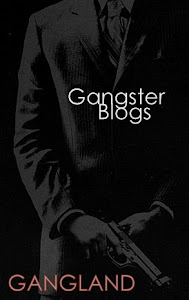
 Using an efficient, high-tech approach to cocaine smuggling that facilitated shipment of the drug in mass quantities, Lehder and Jung were soon rising stars.
Using an efficient, high-tech approach to cocaine smuggling that facilitated shipment of the drug in mass quantities, Lehder and Jung were soon rising stars.In the late 70s, the Lehder-Jung partnership began to diverge, due to some combination of Lehder's megalomania, and Lehder's secret scheming to secure a personal Bahamanian island as a complete all-purpose headquarters for his operations.
Carlos Enrique Lehder started out as a stolen car dealer, a marijuana dealer, and a smuggler of stolen cars between the US and Canada. While serving a sentence for car theft in federal prison in Danbury, Connecticut, Lehder decided that, upon his release, he would take advantage of the burgeoning market for cocaine in the United States, and enlisted his bunkmate, former marijuana dealer George Jung (Portrayed by Johnny Depp in the movie Blow), as a future partner. Jung had experience with flying marijuana to the US from Mexico in small aircraft, staying below radar level and landing on dry lake beds. Inspired by the idea, Lehder decided to apply the principle to cocaine transport and formed a partnership with Jung. While in prison he set out to learn as much information, that would be useful to him in the cocaine business, as he possibly could. Lehder would sometimes spend hours questioning fellow inmates on money laundering and smuggling. George Jung said that Lehder kept countless files and constantly took notes. Norman’s Cay was a popular anchorage for visiting yachts. It was developed in the early 1970s as a small residential community with a clubhouse and marina. But in 1978 a Bahamian company called International Dutch Resources began buying up land there. IDR was set up for Lehder by a regular trust company in Nassau, which conveniently managed his working capital.
Lehder bought as much property on the island as he could and then chased off the remaining residents. Armed guards patrolled day and night and former Member of Parliament Norman Solomon was once threatened at gunpoint on the beach. As Lehder chased away the local population and began to assume total control of the island, Bahamian Prime Minister Lynden Pindling, believed to have taken massive amounts of money in bribes from Lehder and associates, did nothing. Norman's Cay became Lehder's lawless private fiefdom. By this time, George Jung had been forced out of the operation, and international criminal financier Robert Vesco had allegedly become a partner. Jung used his prior connections to take up a more modest line of independent smuggling for Escobar, and stayed out of Lehder's way.
Lehder's smuggling operation on Norman's Cay was an overnight success. Court papers show that the first (and modest) load Lehder handled reaped a $1 million profit for two days of work. From 1978 through 1982, the Cay became the Caribbean's main drug smuggling hub and a tropical hideaway and playground for Lehder and associates. Cocaine was flown in from Colombia by jet and then reloaded into the small aircraft that then distributed it to locations in Georgia, Florida, and the Carolinas. These unexpected destinations made evasion easier because U.S. authorities were watching only the country's southern borders.

After their releases (both were paroled), Lehder and Jung built up a small stream of money through simple, traditional drug smuggling - they enlisted two American girls to take a paid vacation to Antigua, receive cocaine, and carry it back with them to the US in their suitcases. Repeating this process several times, they soon had enough money for an airplane.
Using a small plane and a professional pilot, they began to fly cocaine into the United States via the Bahamas, increasing their financial resources and building connections and trust with Colombian suppliers while spreading money around among Bahamian government officials for political and judicial protection. Their untraditional method of drug-smuggling began to gain credibility.
Shortly thereafter, Lehder talked other drug lords, already active in the marijuana trade into forming a cooperative that became a cartel based in the northwestern industrial city of Medellin (Colombia's second largest city).














0 comments:
Post a Comment